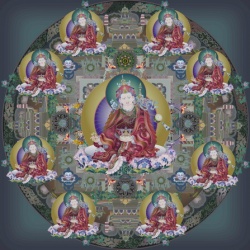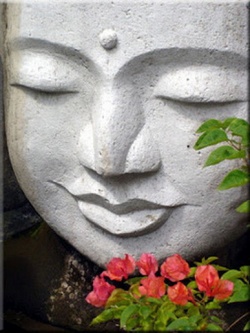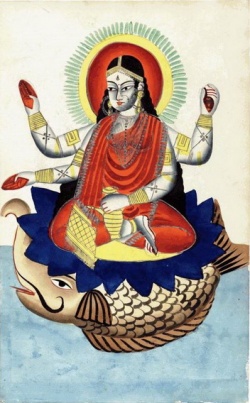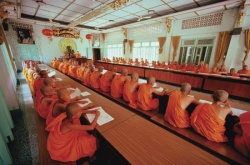Zen Path (Chan) and its three gates of practicing
Why Zen – 3 R’s
Release...
Remain...
Recover...
Release the stress of now
-to be less emotional
-know how to take care of breathing
-understand better about body
Remaining in the peace and ease of daily life
-more wisdom on carrying out right action
-better understanding on communication
-balance relationship with people and nature
Recovering original nature
-Form is not what we see and think on surface
-Insight is the only to cultivate right view and right thinking
-Truth can't be saperated from phenomena
-Zen is about to read form through insight to recognize the truth
What is Zen - 3 C’s
concept of Zen (Chan)
content of Zen (Chan)
core of Zen (Chan)
Concept of Zen (Chan)
Names
-Zen is the Japanese pronunciation of “Chan” in Chinese
-“Chan” is collected from the term “Chan Na”
-“Chan Na” is translated from Sanskrit “Dhyāna”
-“Dhyāna” is a name of the state of calm and deep mind, widely used in India religions
-“Chan”- Zen is not equal to “Dhyāna”
Meanings
-Narrow sense: The name of a school of Chinese Buddhism.
-Wider sense: all the Buddhism grow up in China and spread from China to world.
-General sense: All the ways of Buddhist practice to realize the truth.
-Zen is a branch of Chinese Chan Buddhism to Japan.
-In Live Zen Center, Zen means all Buddhism.
Content of Zen (Chan)
Right mindfulness
- neither resist against not attach to
Right concentration
- stable and clear clean mind
Right view
-Impermanence – changing in every moment
-Causes, conditions and effects
-No independent self – dependent arising
-Infinite mind – no boundary
-Equal mind – no discrimination
Core of Zen (Chan)
Wisdom (mind of realizing truth)
+Samatha (calm and refined mind)
-9 stages of meditation
+Vippassana (observe and think with right view)
-Observe and understanding about suffering
-Impermanence – changing causes, conditions and effects
-Emptiness - No Inherent Self – Dependent Arising
Compassion (broadness of mind)
-Infinite mind – no boundary
-Equal mind – no discrimination
How to practice – 3 G’s
Gate of South-East Asia Hinayana
Gate of Chinese Mahayana
Gate of Tibetan Mahayana
The practice to cultivate Right Concerntration and Right View - (Samatha & Vippassana)
I. Samatha - 9 stages of calm abiding in right concerntration
(For all Gates of South-East-Asia Hinayana, Chinese Mahayana, Tibetan Mahayana)
Proper conditions for doing calm abiding meditation
1) abiding in a harmonious or a conducive place
2) to have few desires for daily life
3) to be content
4) to be free of the hustle and bustle of a lot of different activities
5) to be able to protect well whatever vows one has taken. "pure morality" or moral discipline.
6) reduce one’s attachment to greed, hatred…by right thinking
Objects to focus on (by mind not by eyes)
1) Still point (nose tip, navel…)
2) Recite Buddha’s name / mantra
3) Buddha’s figure in mind
4) Question/doubt of Chinese Chan practice
Five Faults
1) laziness
2) forgetting the instruction, forgetting the object
3) sinking and excitement of unstable mind
4) then not applying the antidotes
5) over-application of the antidotes
The antidotes (treatment)
1) faith
2) aspiration
3) perseverance
4) flexibility, blissful "pliancy" (taming of body and mind)
5) mindfulness
6) Introspection by right thinking
7) applying the antidotes
8) non-application of antidotes when they’re not necessary
The Nine Stages of calm abiding Meditation
Tight application
1. placing the mind within by following right instruction
2. the continual placement by right thinking
Interrupted application
3. patch-like placement of the mind (if lost, can bring it back soon)
4. close placement (no longer any loss of the object) 3-4 by right mindfulness
5. subduing the "sinking" that occurs by alert/vigilance
6. pacifying the excitement that occurs with less vigilance
7. complete pacification (the excitement and sinking occur much less, and rarer) 5-7 by right awareness
Uninterrupted application
8. becoming single pointed by enthusiasm and perseverance
Spontaneous application
9. equal placement (warm on top of head, feel light, mental and physical pliancy/tamed…) by habitual/natural perseverance
II. Vippassana - Observe and think with right view
Gate of practice in South East Asia Hinayana Buddhism – Four mindfulness
1 The key knowledge
+Four Dharma Seals
-Suffering
-Impermanence
-Dependent Arising & Emptiness
-Nirvana
+Four Noble Truth
-Suffering
-How suffering arise
-The ways to Cease
-End of suffering
+Five Aggregates
-Form
-Feeling
-Perception
-Mental formation
-Consciousness
2 The key Sutras and Commentary
-Dharma sutra
-Great Discourse on four mindfulness
-Book of Abhidharma
-Commentary on pure path
…...
3 The key practice - Four mindfulness
-Body (breathing, posture, movement, elements…)
-Sensation (pleasant, unpleasant, neither…)
-State of Mind
-Dharma arise in mind (4Dharma seals, 4 noble truths, 5 aggregates, 12 links of dependent arising…)
4 The truth to realize
-Impermanence
-Dependent Arising
-Emptiness of inherent Self both in sentient beings and all phenomena
Gate of practice of Chinese Mahayana Buddhism (Chan school)– Three Channels
1 The key knowledge
+Four Dharma Seals
-Suffering
-Impermanence
-Dependent Arising & Emptiness
-Nirvana
+Five Aggregates & Right View
-Form
-Feeling
-Perception
-Mental formation
-Consciousness
-No Inherent Self and Dependent Arising
+Faith on Buddha Nature in oneself
-Buddha Nature=Emptiness=No Inherent Self=Dependent Arising
+Eager to recover Buddha Nature in oneself
-Direct point to truth
-Read truth from phenomena
-Doubt on “inherent self”
-Eager to find answer – “who” or “what”
2 Sutras and Commentary
-Heart Sutra
-Diamond Sutra
-Lotus Sutra
-Lankavatara Sutra
-Treatise on Middle Way
-Treatise on awaking the faith in Mahayana
…...
3 Three channels
-Modern and old case study (Gong-an), the master will give specific case study to specific student
-Arouse Zen doubt and be mindful on Zen doubt, which is evoked by master
-Sit in silence with clear awareness and right view
4 The truth to realize
-Impermanence
-Dependent Arising
-Emptiness of inherent Self both in sentient beings and all phenomena (Buddha Nature)
Gate of practice in Tibetan Mahayana Buddhism - Two wings
1 The features of practicing system
+Four Dharma Seals
-Suffering
-Impermanence
-Dependent Arising & Emptiness
-Nirvana
+Five Aggregates & Right View
-Form
-Feeling
-Perception
-Mental formation
-Consciousness
+Thinking and understanding about No Inherent Self and Dependent Arising
+Sense of “inherent Self” and Science of Logic
2 Sutras, Commentary and Science of Logic
-Heart Sutra …
-Treatise on Middle Way
-Ornament of Direct Comprehension
-Ju-She Abhidharma
-Logician Dharmakirti
-Liberation in Hand
…...
3 Two Wings - Two states of mind (recognize emptiness and delusion)
+The inherent self is empty like space
-Let the sense of “inherent self” arise (especially when someone is in fear)
-If there’s such a “inherent self” exists, it should be: same or different from Five Aggregates, otherwise it never exist.
-After logical analyzing, it is neither same nor different from Five Aggregates, so it can be sure that it never exist.
-The sense of "no existing of inherent self" is as empty as space.
+Live in delusion like dream
-If the sense of "inherent self is empty as space" arises
-In life, when see or meet with everything, there's no solid "inherent self" existing in the form of that thing.
-So that ,there's nothing solid, like the sense in dream.
+Qualified master with pure linage is the precondition to practice in the right way.
4 The truth to realize
-Impermanence
-Dependent Arising
-Emptiness of inherent Self both in sentient beings and all phenomena
The practice to cultivate Compassion - Broadness of mind
South East Asia Hinayana Buddhism
+Four infinite minds (best wishes for all sentient beings)
-Loving kindness- wishing all beings maintain happiness and causes of happiness
-Mercy- wishing all beings away from suffering and causes of suffering
-Joy- wishing all beings gain the happiness without arising of suffering
-Equal mind-wishing all beings stay with equal mind without discrimination of like or dislike, love or hatred
Chinese Mahayana Buddhism (Bodhicitta)
+ Four infinite minds (best wishes for all sentient beings)
-Loving kindness- maintain happiness and causes of happiness
-Mercy- away from suffering and causes of suffering
-Joy- stay with happiness without arising of suffering
-Equal mind-stay with equal mind without discrimination of like or dislike, love or hatred
+Bodhicitta - To Become Buddha for benefiting all beings
+Four Bodhisattva Vows
-Sentient beings are numberless, I vow to liberate.
-Afflictions are inexhaustible, I vow to cease.
-The Dharmas are boundless, I vow to master.
-The Buddha's way is unsurpassable, I vow to become.
Tibetan Mahayana Buddhism (Bodhicitta)
+Four infinite minds (best wishes for all sentient beings)
-Loving kindness- maintain happiness and causes of happiness
-Mercy- away from suffering and causes of suffering
-Joy- stay with happiness without arising of suffering
-Equal mind-stay with equal mind without discrimination of like or dislike, love or hatred
+Bodhicitta - To Become Buddha for benefiting all beings
+Four Bodhisattva Vows
-Sentient beings are numberless, I vow to liberate.
-Afflictions are inexhaustible, I vow to cease.
-The Dharmas are boundless, I vow to master.
-The Buddha's way is unsurpassable, I vow to become.
+Tonglen - exchanging oneself with others
-Think of the harms of selfishness and benefit of caring others.
-Exchange self with others, to give up the self-love and to give all love and care to others.
-Practice through breathing in-out, when breathe-in, meditate to breathe in the negative energy of others, when breathe-out, meditate to
breathe out the positive energy to others.
+7-step/point - Regarding all the beings as mothers
-Know and understand, why all the sentient beings are used to be our mothers in the past lives, and will be our mothers in the future
lives.
-Think of their favors, how they feed, care and protect us as a mother.
-Give return in actions, we can’t bear our mother sinking in the loop of sufferings, we must help them to free from samsara.
-Loving kindness and mercy, even though we try give loving kindness and mercy to our mother as much as possible, but it is so limited
because our ability is not enough.
-To become Buddha, only when we become Buddha, can we possess full ability to help our mothers survive from the suffering of one life
and whole samara.
Wishing all the sentient beings become the wholly enlightened one – the Buddha as early as possible!














